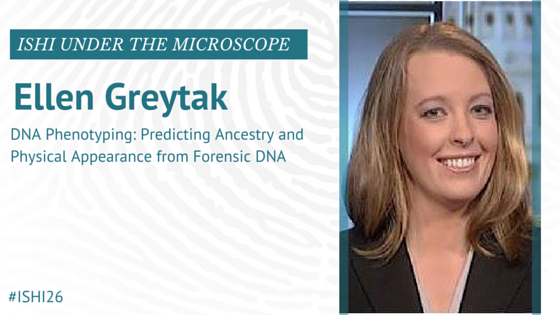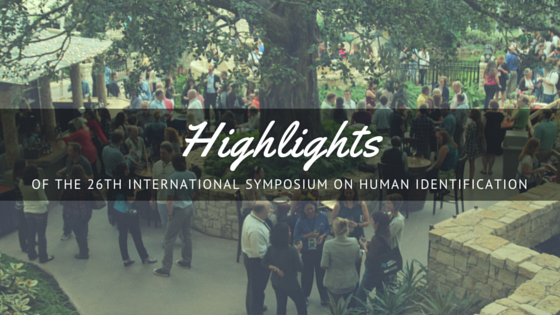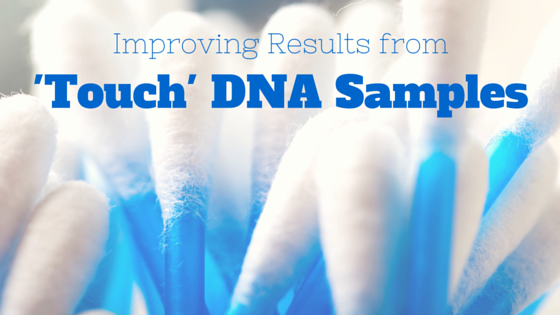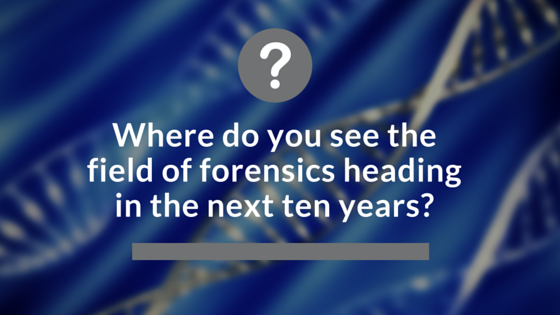Under the Microscope – Ellen Greytak

The ISHI 26 agenda is already filling up with some great talks from amazing speakers! While the forensic community is a tight-knit group, we can always get a little closer, right? With that in mind, we asked our speakers some questions to get to know them a little better outside of their work. We’ll be […]
Highlights of the 26th International Symposium on Human Identification

Those of us lucky enough to attend the 26th International Symposium on Human Identification (ISHI) can agree that the meeting was a resounding success once again this year—plenty of outstanding workshops, presentations and posters, great networking and learning opportunities and of course fun with new and existing friends and colleagues. Now that we’ve all had […]
An Interview with Michael Baird

Michael Baird talks about the first DNA court cases. TRANSCRIPT: Well 25 years ago, it was a lot different than it is today. There were fewer companies that were doing DNA testing. The company I was with then (Lifecodes Corporation) was one of the major commercial companies doing forensic testing as well as paternity. […]
Improving Results from ‘Touch’ DNA Samples

As DNA technology has become more sensitive over the years, there has been an increase in the number of samples that laboratories are receiving with requests for DNA analysis on “touch” DNA samples. “Touch” DNA samples refer to samples where biological fluid cannot be detected, however there may be skin cells left behind due to […]
Where do You see the Field of Forensics Heading in the Next 10 Years?

We asked our ISHI 26 speakers what technologies they are most excited about or where they saw the field heading in the next 10 years. Here’s what they had to say! I hope that it will be possible to establish robust methodology and standard guidelines for next generation sequencing involving […]
An Evaluation of a New Rapid DNA Platform for Field Forward Applications

Between the years of 2005 and 2010, the National Institute of Justice (NIJ) reserved $58 million to assist in the reduction of the arrestee and offender DNA backlog. Considering the limited resources available to forensic agencies, by relieving crime laboratories of the analysis of these reference samples this would allow for trained analysts to focus […]
Identifying 140 Year-Old Remains Using Massively Parallel DNA Sequencing

The goal of forensic DNA testing of human skeletal remains is identification of the unknown individual. A variety of genetic markers can be used to achieve identification, including highly polymorphic autosomal short tandem repeat (STR) loci and lineage markers (Y-STRs and mtDNA). However, reference samples must be available for comparison for these markers to be […]
Aiding the Innocent: How Witness to Innocence Supports the Wrongly Convicted

ISHI 26 featured Kirk Bloodsworth, the first person sentenced to death who was exonerated through DNA evidence. Twenty of the 336 people who have been exonerated through post-conviction DNA testing in the United States served time on death row.* The true perpetrators have been identified in 166 of those 336 exonerations, and went on to […]
Two Novel Multiplex INDEL Assays for use with Degraded DNA Samples

Most commercially available STR kits yield amplified fragments with lengths between 100 and 500 base pairs. However degraded biological samples typically are fragmented into pieces of approximately 180-200bps. When samples have been degraded to fragments less than 500 base pairs, many of the loci in STR amplification kits, fail to yield amplification products. INDELs are […]

